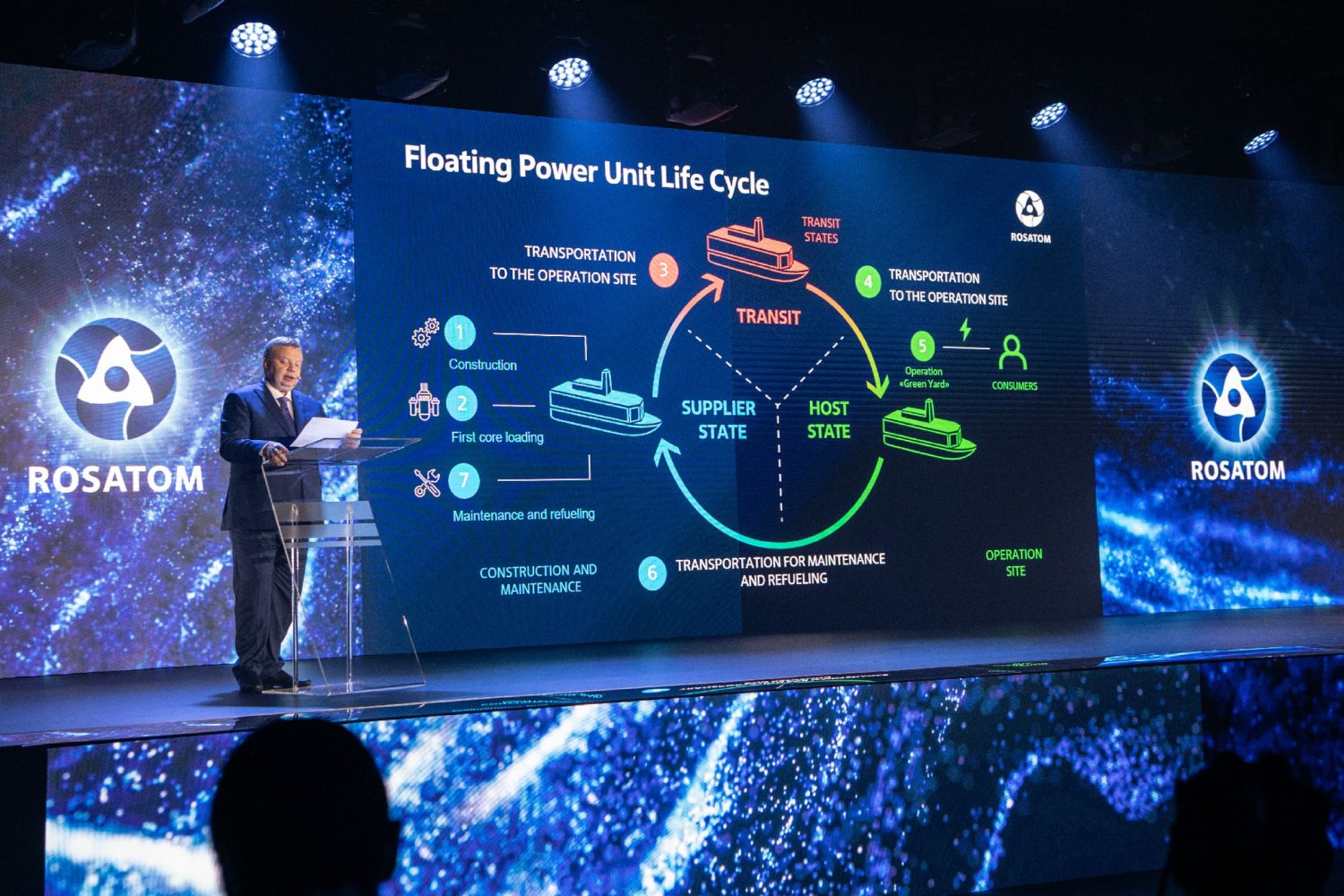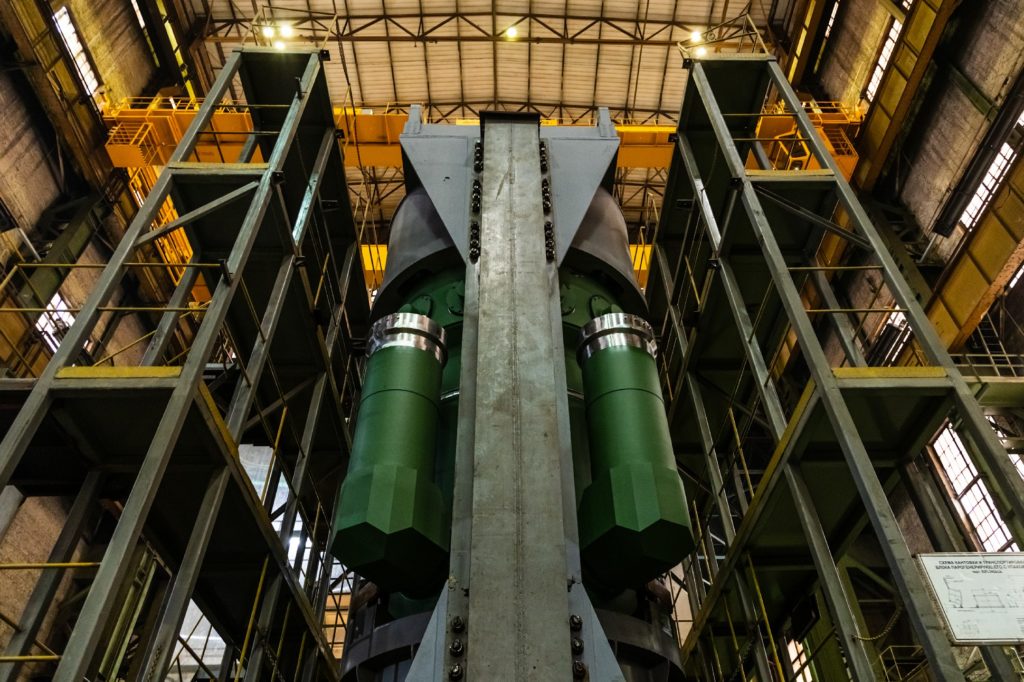
Grand Presentation of Russian SMRs
back to contentsSmall modular reactors (SMRs) have become a topic so significant for both Rosatom and the global community that the Russian nuclear corporation organized the SMR Day, a special event dedicated to small-scale nuclear power plants, at the UN Climate Change Conference COP28. Rosatom also conducts negotiations, makes agreements, develops designs and prepares documents for the construction of SMRs, and shares the specifics of SMR operation and maintenance with nuclear experts from other countries.
The SMR Day was one of the key events on Rosatom’s program at COP28. It began with an outstanding multimedia presentation of the onshore SMR under construction in Yakutia, which is being carefully integrated into the Arctic ecosystem.
The guests of the event also had the opportunity to take a virtual tour of the Akademik Lomonosov floating nuclear power plant that supplies Russia’s northernmost city of Pevek in Chukotka with electricity and heat. As our readers may remember, we wrote in our last issue about the first refueling of this world’s only offshore nuclear station.
“I am confident that Rosatom’s small nuclear capacity solutions will become an effective and environmentally safe choice for those countries that, for a number of reasons, have never considered nuclear generation before,” said Rosatom Director General Alexey Likhachev in a video message to the SMR Day visitors.
Agreements
Many countries are really interested in Russian SMRs. Dalaijargal Dorjbal, executive director of the Mongolian state-run company Monatom, was presented at COP28 with a concept of an onshore SMR that might be built in Mongolia.
Earlier, in mid-November, Alexey Likhachev and Vladimir Potanin, President of Nornickel, signed an agreement of intent and cooperation on the construction of an SMR in the Norilsk industrial region isolated from the national power grid. The parties will study available options, determine a priority site for the onshore SMR, its configuration, and the infrastructure required for the reactor construction and operation, and select an optimal project delivery scheme.
“Nornickel and the Norilsk industrial region are developing, so we will need more electricity after 2030,” Vladimir Potanin commented.
“A high-tech nuclear power plant based on the latest RITM‑400 reactor might be considered as a priority. Our low-power designs offer a reliable source of electricity for a long term and at predictable cost. In addition, nuclear power can make a significant contribution to the fight against climate change due to the absence of CO2 emissions. All these advantages make SMR technology a sought-after choice for large industrial facilities,” Alexey Likhachev said.

10 small reactors
In early December, ZiO-Podolsk (part of Rosatom’s power engineering division) manufactured the tenth RITM‑200 reactor for the new generation of Project 22220 nuclear icebreakers. This reactor will be installed on the fourth serial icebreaker Chukotka, which is being built on commission from Rosatom at the Baltic Shipyard in Saint Petersburg.
“The RITM‑200 reactors have proved themselves in powering our new universal nuclear icebreakers that make navigation on the Northern Sea Route more efficient. The same reactors will be installed on the fifth and sixth serial nuclear-powered icebreakers. The decision to build them has already been made by the Russian Government,” Alexey Likhachev said.
Training
In November, an IAEA training course on the safety of small modular reactors was completed at the Saint Petersburg branch of Rosatom’s Technical Academy. Professionals from 13 partner countries embarking on nuclear power programs learned about the SMR technology and related IAEA safety guidelines, and studied how to apply these guidelines to different types of small modular reactors.
The course was taught by experts from the Russian watchdog Rostechnadzor, RITM reactor designer OKBM Afrikantov, and Rosatom’s Technical Academy. Russian experts shared their experience in the construction and operation of small modular reactors, answered questions on nuclear infrastructure, licensing, nuclear and radiation safety.
The course attendees took virtual tours of Akademik Lomonosov and OKBM Afrikantov, as well as a real tour of Rosatom’s Emergency Center. They were shown nuclear accident prevention and management systems and learned about the interoperability of emergency response teams.
Critical design review
Technical designs of a RITM‑200N reactor, an AS‑14–15 core and its components presented by experts from AtomEnergoMash (Rosatom’s power engineering division) passed a critical review by the Scientific and Technical Council of Rosatom. RITM‑200N will be installed at the small-scale nuclear power plant in Yakutia.
The Council noted that the designs were thoroughly elaborated and met the scope-of-work requirements. Work is now underway to develop detailed design, operational and acceptance documents for the reactor equipment.




